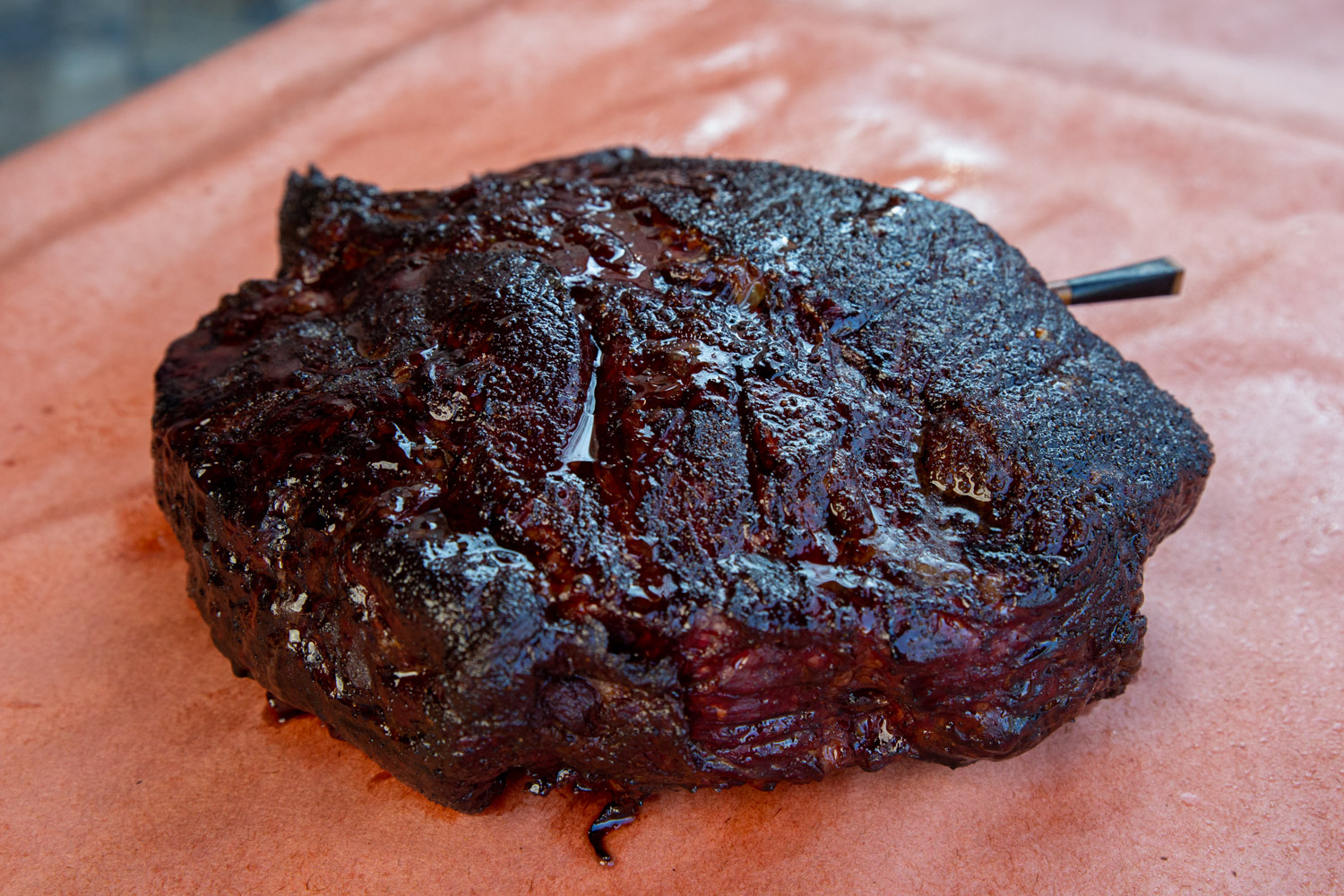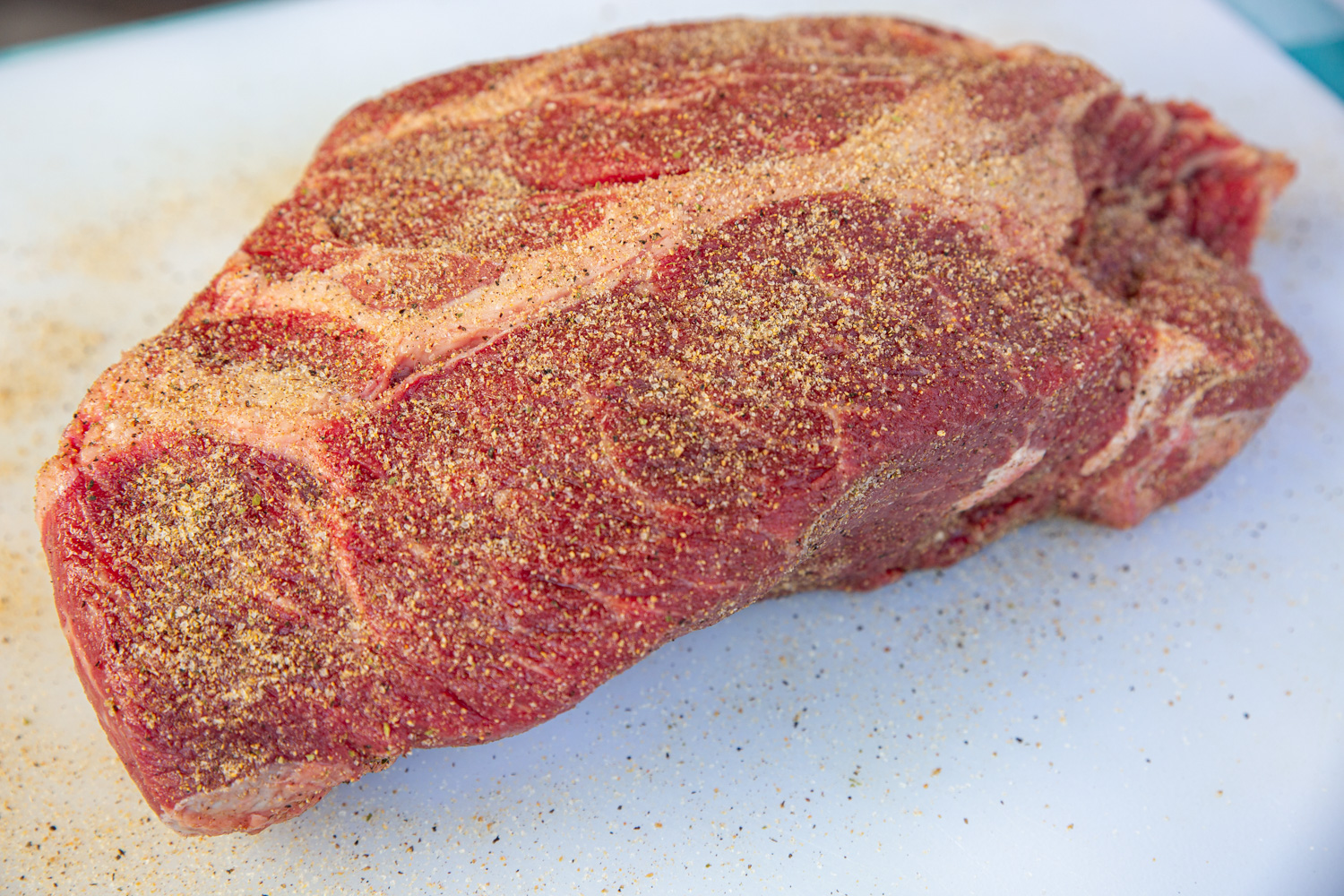Smoking a beef chuck roast may seem intimidating, but it’s actually quite easy and rewarding with the right techniques. A chuck roast is a tougher, well-exercised cut that becomes incredibly tender and juicy when prepared low and slow on a smoker. It’s also more budget-friendly than fancier cuts like brisket.
Follow this step-by-step guide to learn how to turn an inexpensive chuck roast into a mouthwatering smoked masterpiece
Benefits of Smoking a Chuck Roast
There are several advantages to smoking a chuck roast rather than other cuts of beef:
-
Cost – Chuck roast is very affordable usually $4-6 per pound. Much cheaper than brisket or prime rib.
-
Flavor – The connective tissue in chuck roast breaks down during low and slow smoking, releasing tremendous flavor.
-
Tenderness – Long smoking times transform the meat from tough to fork tender.
-
Convenience – Smaller size means a chuck roast smokes faster than giant brisket or pork shoulder, usually 4-6 hours.
-
Versatility – Finish with a sear to serve sliced, or smoke all the way through to pull or shred for sandwiches.
Selecting and Preparing the Chuck Roast
Choose a chuck roast that is well-marbled with white fat striations throughout the meat. The marbling provides flavor, moisture and tenderness. Look for a roast about 3-5 pounds to feed 6-10 people.
Before smoking, trim off any excess hard fat or silver skin, then rub the meat all over with a bold seasoning blend. Let it rest overnight in the fridge for maximum flavor penetration. Some good rub options include salt, pepper, garlic powder, paprika, brown sugar, chili powder, cumin, and chipotle.
Right before placing the roast in the smoker, bind it with butcher twine to maintain its shape. This helps ensure even cooking and easier handling when transferring on and off the grill.
Setting Up Your Smoker
The key to smoking chuck roast is maintaining a low temperature for an extended period, aka “low and slow.” Set up your smoker or charcoal grill for smoking with indirect heat around 225-250°F.
Soak wood chips if needed. Good woods for beef include hickory, oak, pecan, mesquite, apple, or cherry. Add a water pan underneath the meat to help regulate temperature.
Use a digital probe thermometer to monitor the internal temp of the meat. Instant read thermometers are also useful for quick checks. Proper temperature control is critical when smoking low and slow.
Smoking the Chuck Roast
Once your smoker is holding steady at 225-250°F, place the seasoned and tied chuck roast on the grate over the water pan/drip tray. Maintain this temperature range for the entire cook.
Smoke the meat uncovered for the first few hours until it develops a dark, crusty bark on the exterior. This usually takes 3-4 hours. Spritz with apple juice or beef broth every 45-60 minutes to help form the bark.
Once bark is achieved, wrap the roast tightly in butcher paper or foil and return to the smoker. This braising step helps break down collagen for tenderness and keeps the roast moist.
Continue cooking until the internal temperature reaches 200-205°F. The roast could take anywhere from 4-8 hours to finish smoking, depending on size. Monitor temps closely near the end.
Resting, Slicing and Serving
When the chuck roast reaches 205°F, remove from the smoker and let it rest wrapped for 1-2 hours. This finishing step allows juices to redistribute for maximum tenderness and flavor.
Unwrap the roast and slice across the grain about 1⁄4 inch thick. Serve the slices with barbecue sauce, au jus, or other condiments. Leftovers make amazing sandwiches too.
With the right preparation and smoking technique, a beef chuck roast can go from tough and cheap to incredibly succulent. Follow these tips for mouthwatering smoked chuck roast every time. Enjoy!

How To Dry Brine a Chuck Roast
If you’re preparing your beef roast the night before you plan on smoking it, you can lightly salt the exterior with kosher salt and allow it to dry brine overnight in your refrigerator. Make sure and cover the meat after salting it and before you put it into your refrigerator overnight—we accomplish this by wrapping it in saran wrap, aluminum foil, or placing the meat in a disposable catering tin and tenting it with foil.
Dry brining the chuck roast is going to draw the water out from your beef and dissolve the salt. The beef will then reabsorb that salt solution into your meat, enhancing the flavor, and breaking down some of the muscle fibers resulting in even more tenderness.
There is a point of diminishing returns, so all you want to do is dry brine it overnight. If you dry brine for too long, such as several days, you risk the meat becoming mushy. Overnight up to 24 hours is the perfect dry brine timeline.
And if you aren’t able to salt it the night before, don’t worry because there are many times, we either forget or just don’t have the time. Dry brining is an optional step that can boost flavor if you make plans early to complete the process.

Intramuscular Fat and Intermuscular Fat
Intramuscular fat is located within the meat and is referred to as marbling in the meat industry. This is the good fat that melts during the cook contributing to juicy meat and excellent flavor. Beef chuck roast has a lot of this intramuscular fat, which does not need to be trimmed out. The trick is making sure that all that fat renders out into liquid fat in your final smoked chuck roast.
There is also going to be intermuscular fat, the fat that separates the muscles. Chuck roast contains intermuscular fat because it is comprised of several different muscles.
Intermuscular fat is the fat that is chewy and will never break down all of the way. It will just soften and become chewy if you try to eat it. We’ve all had that chewy piece of meat that tires out our jaw and that was more than likely a piece of intermuscular fat.

You’ll notice this type of fat right away within your chuck roast as it will be very firm to the touch and typically runs through the middle of your meat like a web. Don’t worry about cutting it out or trimming it, because it’s holding the roast intact and once the cook is done it is easy to pull the meat and remove these intermuscular fat beds.
In summary, no necessary trimming is typically needed in a chuck roast as you might find in other cuts of meat.
Now, you have 2 options depending on if you’re prepping your chuck roast to smoke the night before or the morning of your party, whether or not to dry brine.
Ultra Juicy Smoked Chuck Roast Recipe
FAQ
How long does it take to smoke a chuck roast?
-
Smoking-Meat.comhttps://www.smoking-meat.comA Pair of Smoked Chuck Roasts – Learn to Smoke Meat with Jeff PhillipsCook Time: 8 hours (approx.) … You can also just set the chuck roasts right on the smoker grate. Let them smoke cook for 4 hours or until they reach about 160…
At what temperature does chuck roast fall apart?
-
Collagen Breakdown:Chuck roast, like other tougher cuts of meat, contains collagen, which is a protein that doesn’t begin to break down until it reaches around 140°F (60°C) and fully breaks down around 205°F (96°C).
-
Importance of Braising:Braising involves cooking the roast in a liquid, typically a broth, and under a tight lid, which helps maintain a moist environment and facilitates the breakdown of collagen.
-
Temperature and Time:While a final internal temperature of 200°F is the target, the time needed to reach that temperature depends on the size of the roast and the braising method (e.g., slow cooker, oven).
-
Checking for Doneness:Once the roast reaches 200°F, you can check its doneness by probing it with a fork or tongs. It should be very tender and easily shreddable.
Is chuck roast a good cut of meat to smoke?
For juicy, tender, smoky, and foolproof beef barbecue, choose chuck.
Can you smoke a chuck roast like a brisket?
-
1. Choose a suitable chuck roast:Look for a chuck roast with a good amount of marbling (fat), as this will help keep the meat moist during smoking.
-
2. Prepare the chuck roast:Trim any excess fat, but leave some for flavor and moisture. Season generously with your favorite brisket rub.
-
3. Smoke at a low temperature:Similar to brisket, you’ll want to smoke the chuck roast at a low temperature, typically around 225-250°F.
-
4. Monitor the internal temperature:Use a meat thermometer to check the internal temperature of the chuck roast. Aim for an internal temperature of around 190-200°F for a sliced roast that resembles brisket, or 205°F for pulled beef.
-
5. Consider wrapping:Some recipes recommend wrapping the chuck roast in foil after it reaches a certain temperature (around 165°F) to help it braise and become more tender.
-
6. Rest before slicing:Allow the smoked chuck roast to rest for about 30 minutes to an hour before slicing, allowing the juices to redistribute.
